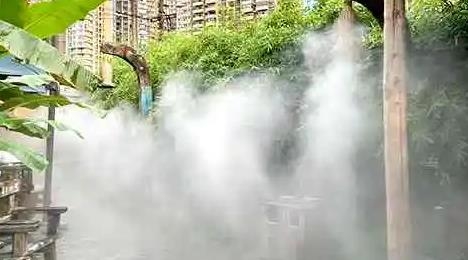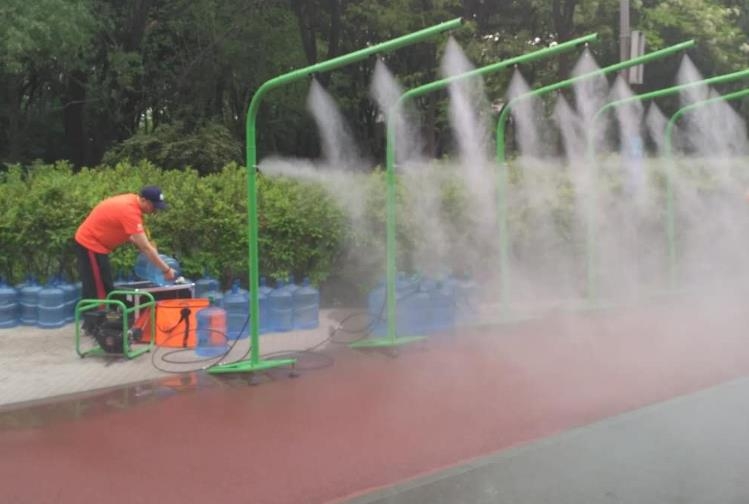Menu
Technical points of mist cooling
Mist cooling is a technology that uses the principle of heat absorption by water mist evaporation to reduce air temperature. Its technical points mainly include the following aspects:
Mist system design: The mist system should be designed according to the need to mist the area, wind speed, temperature and other parameters, the number of nozzles, nozzle spacing, mist Angle and so on need to be considered.

Water source and water quality: water source needs to be stable and sufficient, water quality should meet the relevant national standards, do not contain harmful substances, so as to avoid impact on the environment and human health.
Water mist particle size: The size of water mist particles directly affects the cooling effect, and the size of water mist particles is generally required to be between 10 microns and 30 microns.
Control system: The mist cooling system should be equipped with an intelligent control system, which can automatically adjust the mist amount and mist time according to the ambient temperature, humidity, wind speed and other parameters to achieve the best cooling effect.

Safety: When designing a mist cooling system, safety issues need to be considered, such as the location and Angle of the mist, as well as preventing water mist from causing damage to equipment and personnel.
Maintenance: Regular maintenance and maintenance of the mist cooling system, including cleaning the nozzle, replacing the filter, etc., to ensure the normal operation and service life of the system.
In short, the key points of mist cooling technology include mist system design, water source and water quality, water mist particle size, control system, safety and maintenance, etc., only in these aspects are effectively guaranteed, in order to ensure the effect and safety of mist cooling.
Mist system design: The mist system should be designed according to the need to mist the area, wind speed, temperature and other parameters, the number of nozzles, nozzle spacing, mist Angle and so on need to be considered.

Water source and water quality: water source needs to be stable and sufficient, water quality should meet the relevant national standards, do not contain harmful substances, so as to avoid impact on the environment and human health.
Water mist particle size: The size of water mist particles directly affects the cooling effect, and the size of water mist particles is generally required to be between 10 microns and 30 microns.
Control system: The mist cooling system should be equipped with an intelligent control system, which can automatically adjust the mist amount and mist time according to the ambient temperature, humidity, wind speed and other parameters to achieve the best cooling effect.

Safety: When designing a mist cooling system, safety issues need to be considered, such as the location and Angle of the mist, as well as preventing water mist from causing damage to equipment and personnel.
Maintenance: Regular maintenance and maintenance of the mist cooling system, including cleaning the nozzle, replacing the filter, etc., to ensure the normal operation and service life of the system.
In short, the key points of mist cooling technology include mist system design, water source and water quality, water mist particle size, control system, safety and maintenance, etc., only in these aspects are effectively guaranteed, in order to ensure the effect and safety of mist cooling.

